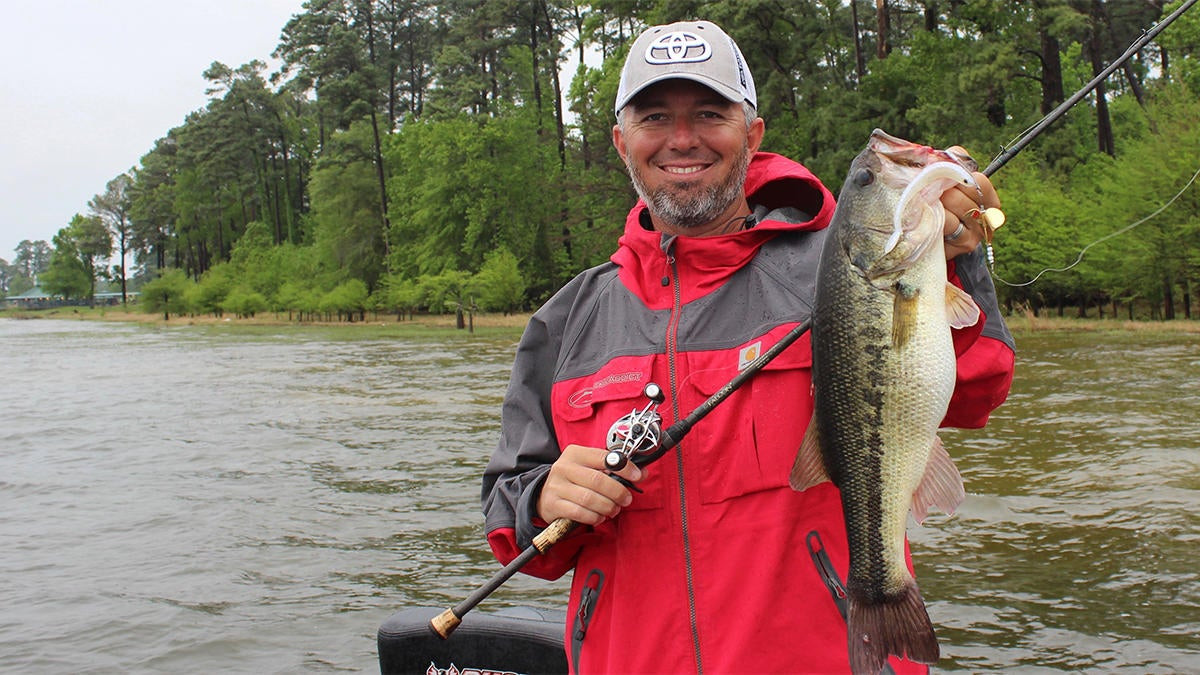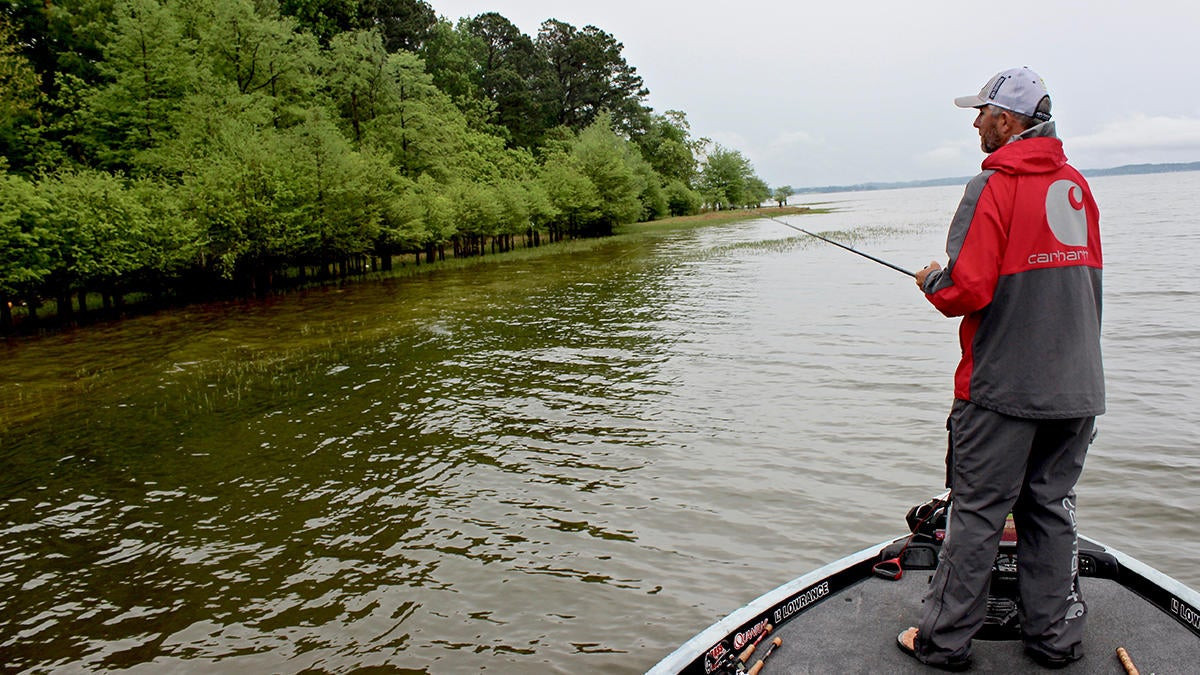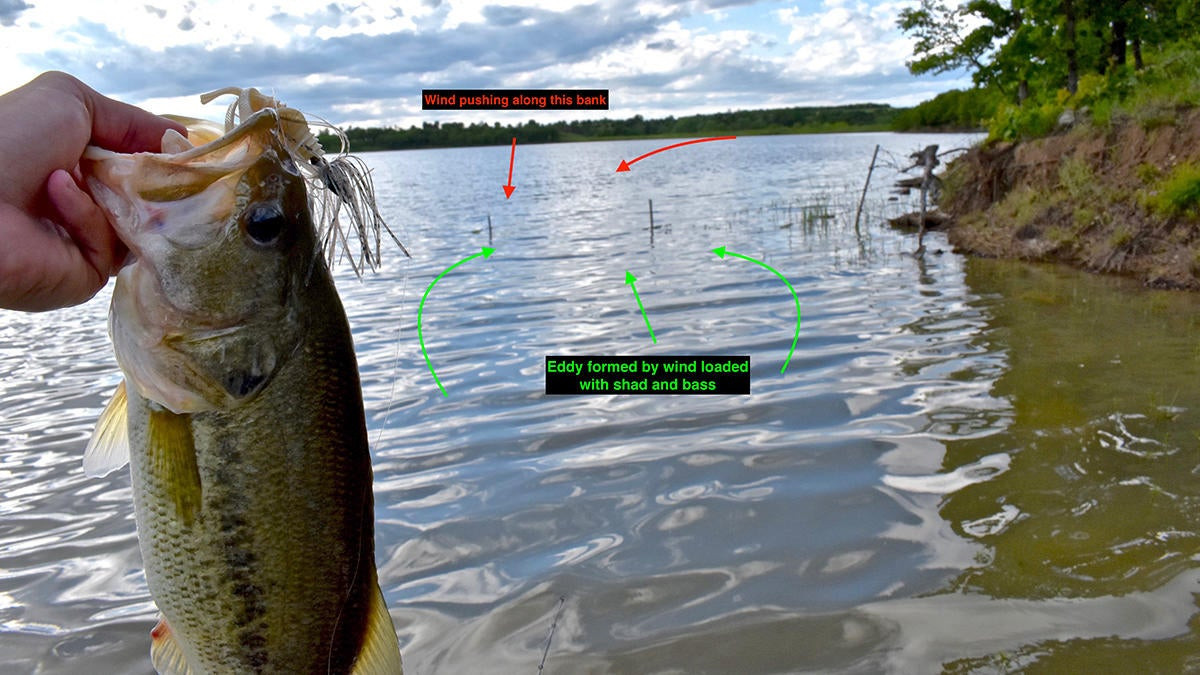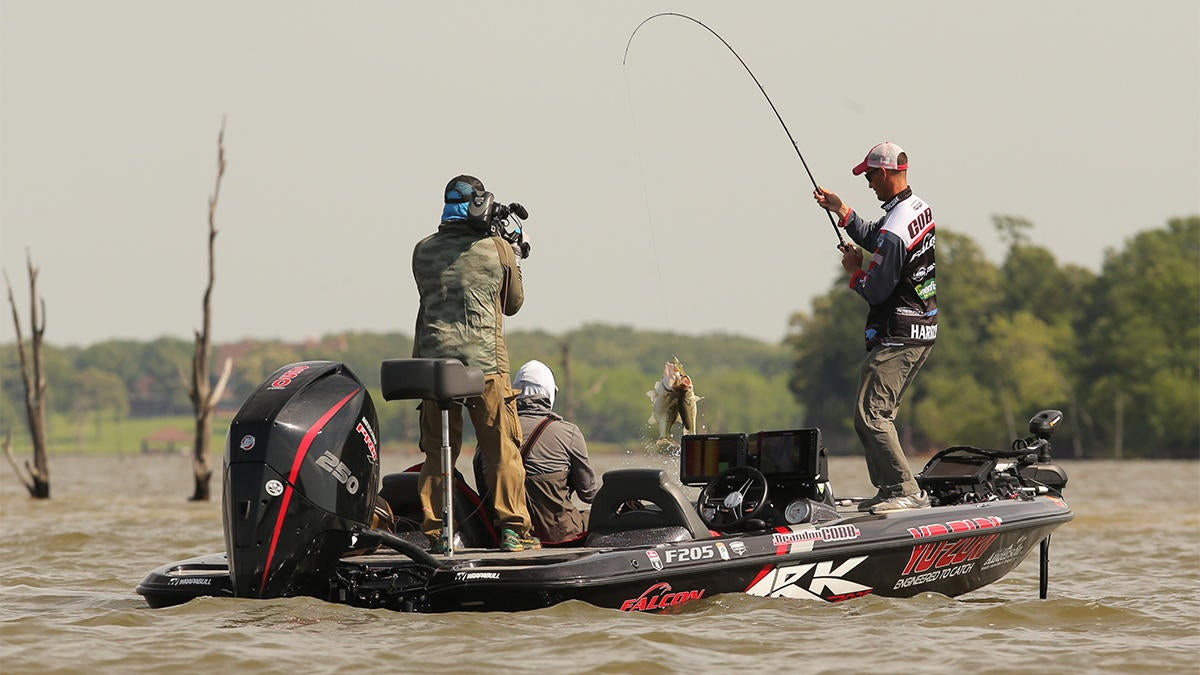Bass feeding on spawning shad can be some of the most aggressive activity an angler can witness in fresh water. The shad spawn generally falls when bass begin heading to their post-spawn haunts, but they take advantage of this phenomenon first. Swarms of shad ripple the surface and they get ambushed from bass below.
Find yourself in the middle of this chaos and you’ll find lots of bass very willing to bite a myriad of lures. The only problem is… it doesn’t last long! Shad primarily spawn throughout the night and rapidly taper off after the first hour or two of sunlight in the morning. If you miss this narrow window, bass can be especially tricky to catch this time of year.
Fortunately, there are ways to extend this bite a few precious minutes so you can take advantage of this natural occurrence. Efficiency is everything when targeting these active baitfish, but follow these tips and they’ll help you catch a few more bass on your next trip.
Shade prolongs activity
Shad need lowlight conditions for them to get up in the top of the water column and start their reproduction process. That’s why shad largely spawn at night and it only lingers into the fringe hours of dusk and dawn. Focusing your efforts on shade during these fringe hours allows you to capitalize on every minute of high activity available. Bassmaster Open champion and Toledo Bend fishing guide Darold Gleason has years of experience targeting the shad spawn and shared his insight.
“Shad won’t spawn all day; they need to feel comfortable before getting together and making sweet, passionate fishy love,” Gleason joked. “In all seriousness, shade makes those shad feel more comfortable and will keep them spawning a little longer than areas without shade. It doesn’t necessarily matter what provides the shade. As long as it’s there, shad will use it and bass won’t be far behind.”
Marina docks, bluff walls, overhanging limbs, edges of aquatic vegetation and sea walls are focal points for shade lines but anywhere shade is present can be fruitful. Look for shad activity in and around these shade lines; when you find them it’s safe to assume active bass are nearby. Even with running shade, shad won’t stay spawning for long. Having a game plan when exploiting the shad spawn is extremely beneficial.
“When focusing on the shad spawn I always try to look for areas on the east side of a lake,” Gleason said. “Since the sun rises in the east, the east side of a fishery is going to stay shaded longer than the west side. It might only give me an extra 30 minutes of lowlight conditions but that’s meaningful this time of year. I also have an idea of four or five spots I can run in quick succession. You can load the boat in a hurry during the shad spawn but every minute is crucial. Make a plan and roll with it!”
Follow the wind
Wind is good for a lot of bass fishing patterns and the same is true during the tail end of spawning shad activity. After the sun gets up you might not be able to visibly see shad and bass busting the surface like in the peak of activity, but wind can prolong the liveliness associated with a shad spawn. Bassmaster Elite Series pro Matt Arey has exploited this scenario many times throughout his career and offered his thoughts.
“I don’t really think the wind keeps the shad spawning,” Arey offered. “But the wind kind of corrals the schools of baitfish in certain areas and keeps them there. Lots of times the wind will pin the shad up near a bank or a dock or something making them vulnerable. Bass see this opportunity and will take full advantage.”
Shad will spawn in extremely shallow cover, or next to a floating dock that’s sitting over 50 feet of water and everywhere in between. Whether it’s shallow or deep, they like to spawn in the top of the water column. This allows us to see spawning activity, and exposes them to being relocated by the wind. Often resulting in thousands of shad being pushed to small areas.
“All the bass know is there is a lot of forage in a little area and it’s like ringing the dinner bell,” Arey said. “Your lure selection might have to switch up from topwater plugs and subtle swimbaits to something with more action like a shallow running crankbait or spinnerbait; but there will still be active bass in the area. Look for current eddies, cover or anywhere else a bass might set up for an ambush.”
Find where bass pull
A final way to exploit the goodness of a shallow shad spawn is to locate the key spots bass pull to after the morning feeding frenzy has subsided. Bass often pull to a shallow or mid-depth hard spot in the same general vicinity they feasted on shad throughout the night and morning. These spots can be clay points, shell bars, creek channel swings or any kind of rubble or rock on a main lake or secondary point. The specific type of structure varies from fishery to fishery.
Realistically, finding these locations isn’t easy, but when you do find them the reward validates the search. A spot the size of a bass boat can load up with incredible schools of big bass. Each year a handful of professional level tournaments are blown out when anglers locate these kinds of areas.
The recent 2019 Toyota Bassmaster Texas Fest on Lake Fork was a perfect example. Several anglers in the top 10 began their day targeting a shad spawn before transitioning to shallow hard spots in the afternoon. Brandon Cobb handily won the event with 114 pounds of bass over the course of four days by following this pattern, as did Drew Benton and Drew Cook.
Professional anglers use their electronics to search for these spots in the immediate area around shad spawning locations. While Side Scan Sonar technology certainly helps, finding these areas with by “just fishing” is possible too. Darold Gleason employs a 6th Sense Cloud 9 C15 crankbait or Strike King 6XD whether he is looking for these areas or has already found them. Maintaining bottom contact with his plug, feeling for structure while also imitating a fleeing shad.
If you’ve struggled to capitalize on the shad spawn or are experiencing the “post spawn blues”, try these techniques on your local fishery. They won’t solve the bass fishing riddle for every scenario but they’ll make you more efficient at targeting the shad spawn phenomenon.















